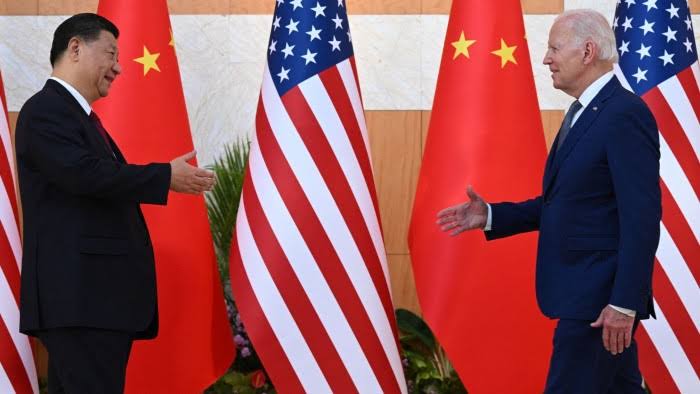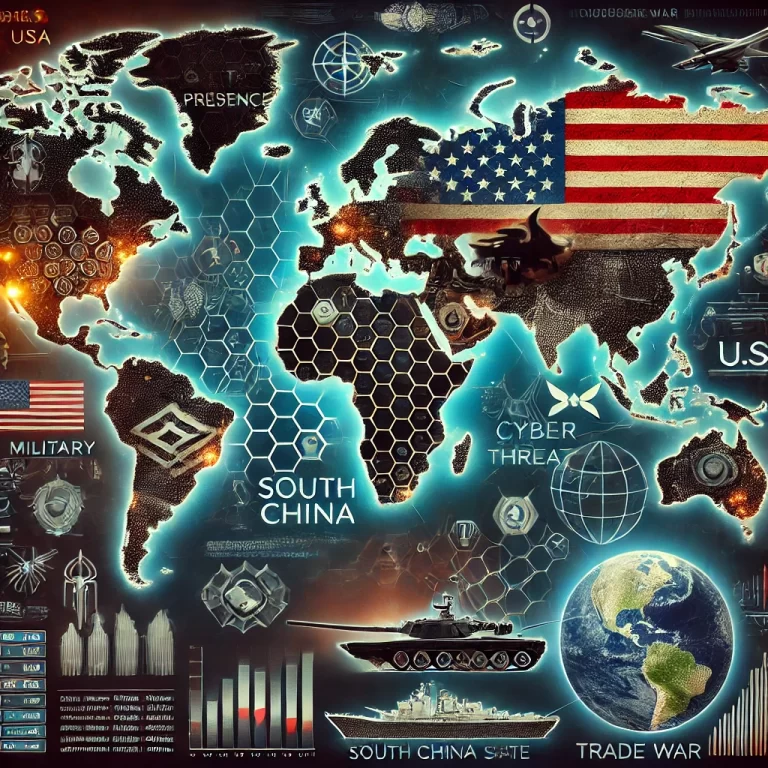
The New Front in US-China Relations
China's latest radar technology fundamentally changes how stealth aircraft are detected by effectively pinpointing their location even when they are designed to avoid conventional radar systems. This capability shifts the strategic balance, particularly in how China interacts with its ally, Russia.
“When elephants fight, it is the grass that suffers.” This African proverb vividly captures the ongoing technological rivalry between global superpowers, particularly in military advancements. At the heart of this rivalry lies stealth technology, exemplified by aircraft like the American F-22 Raptor. Renowned for its ability to evade radar detection, the F-22 signifies a significant advancement in aerial combat capabilities, enabling it to operate undetected and strike without warning. However, recent developments in China indicate a shift in this dynamic, with new radar technology poised to detect even the stealthiest aircraft.
The Genesis of China-USA Tensions:
To fully grasp the significance of this technological shift, it’s crucial to understand the historical context of China-USA relations. The conflict between these two nations can be traced back to the ideological divides of the Cold War. Prior to this period, interactions were limited and cautious. However, as global alignments formed post-World War II, China and the USA found themselves on opposite sides, with China aligning with the Soviet Union against American capitalist ideologies.
Post-Cold War, the relationship has been characterised by a complex mix of cooperation and competition. The rise of China as a global economic power has introduced new dynamics into international politics, with both nations vying for influence over global affairs, including in regions like Africa.
Technological Tensions and Global Influence:
China’s latest radar technology fundamentally changes how stealth aircraft are detected by effectively pinpointing their location even when they are designed to avoid conventional radar systems. This capability shifts the strategic balance, particularly in how China interacts with its ally, Russia. The collaboration or sharing of such technology with Russia could enhance Russian radar systems, strengthening their defensive and offensive capabilities.
For the USA, the enhanced partnership and technological exchange between China and Russia represent a compounded threat. It deepens the military and strategic challenges faced by the USA, especially in areas of contested influence like Eastern Europe and the Asia-Pacific.
Why It Matters:
For China, the development of radar technology capable of detecting stealth aircraft like the American F-22 Raptor is pivotal for maintaining security within the Asia-Pacific region, particularly in the South China Sea. This area has been a hotbed of territorial disputes, with China asserting expansive claims marked by the “Nine-Dash Line”—a demarcation used by China to outline its claimed territories, which overlaps with several other national boundaries. The ability to monitor and potentially engage U.S. aircraft could deter American military presence, which has been active in supporting allies like Taiwan and the Philippines, both contesting China’s maritime claims.
Meanwhile, the USA is strategically positioned in this region to uphold international shipping rights and support allies against undue territorial claims. The presence of U.S. military forces, including advanced aircraft like the F-22, aims to ensure freedom of navigation and deter aggression. In response to China’s radar advancements, the USA may need to reassess its military deployments and accelerate technological developments to sustain its surveillance and combat capabilities, ensuring it can continue to operate effectively in the face of new challenges.
Differing Perspectives and Future Implications:
The contrasting views of the USA and China towards regions like Africa underline broader global strategies. While the USA may need to reconsider its approach to be seen as a partner rather than a patron, China’s investment-driven strategy will likely continue to garner support from developing nations.
The contrasting views of the USA and China towards regions like Africa underline broader global strategies. While the USA may need to reconsider its approach to be seen as a partner rather than a patron, China’s investment-driven strategy will likely continue to garner support from developing nations.
The ongoing development of military technology, such as the radar capable of detecting the F-22, is a critical aspect of the broader strategic competition between China and the USA. This not only affects military tactics but also influences global alliances and the future of international diplomacy.
Summary:
Technological advancements significantly impact international relations and developing countries’ alliance choices. These innovations shape governance, diplomacy, and power structures worldwide, underscoring technology’s pivotal role in modern geopolitics.
Developing countries face distinct challenges in aligning with major powers like China and the USA. Economic development, vulnerability, access to technology, and political considerations all influence their stance. The specific choice of alliance depends on historical relationships, regional dynamics, and geopolitical factors unique to each country.
Overall, developing nations weigh economic, technological, developmental, and political factors when navigating alliance choices amidst conflicts of interest between major powers.
Aric Jabari is a Sixteenth Council Fellow



